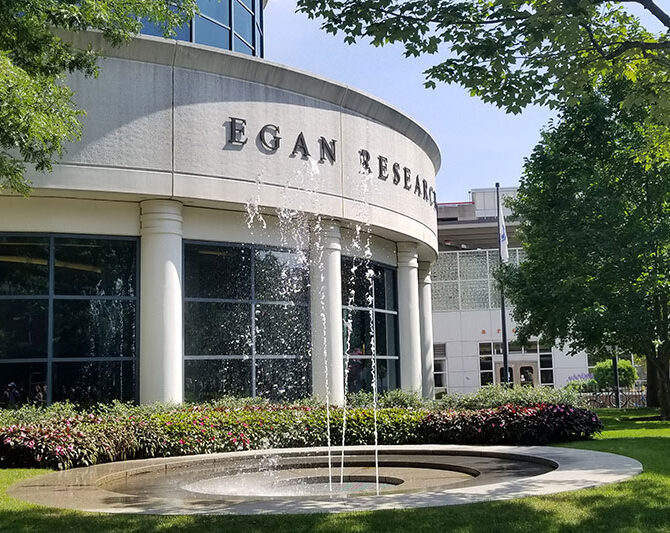Integrating Mills Campus Energy Data

From the East Coast to the West Coast, Northeastern is working to reduce its energy usage and greenhouse gas emissions. Mills College at Northeastern was recently integrated into the Boston campus’ EnergyCAP database, which will aid in the collection of the campus’ energy data to assist with tracking the university’s progress in reducing our emissions.
The process began in May 2022, when Mark Bates, Energy Manager in Northeastern’s Facilities Department, began the process of taking over the procurement and collection of Mills’ energy data. Northeastern currently manages its energy data and utility invoices through EnergyCAP, an energy and sustainability software company that collects, allocates, and analyzes customer utility information in order to help manage resource consumption and reduce carbon footprints. EnergyCAP is a key part of Northeastern’s ability to report on its carbon emissions and provides a detailed overview of energy use to better manage our impacts.
“Every morning when I get in, I open up our bills folder in EnergyCAP,” says Bates. Northeastern’s Boston utility invoices are gathered directly from their three vendors, Boston Water and Sewer, Eversource (electricity), and National Grid (natural gas). “When that bill comes online on their websites, EnergyCAP recognizes the bill, pulls it, and sets up a template with all the different costs and usages sorted into ‘buckets.’” Bates reviews the bills and ensures each charge has been correctly assigned before certifying them to be paid.
By integrating Mills into the EnergyCAP database, the campus has gained access to these resources. Northeastern officially began paying Mills’ campus utility bills on July 1st (the start of the new fiscal year), and Bates has begun reviewing their energy use information.
Bates highlights the team effort that went into ensuring Mills was smoothly integrated into Northeastern’s energy database. With a three-hour time difference between Oakland and Boston, staff had limited windows within the day to coordinate across the two campuses. “The folks at Mills are typically working from nine o’clock to five o’clock,” explains Bates. “So that means if it’s noon here [in Boston], you really have maybe a three-hour window to get things done.” Bates also notes that while it is rather easy to confirm utility bill information from a local campus, where one can physically check the meters in the buildings themselves, doing so for a distant campus is not quite as simple, and the team coordinated more heavily with Mills staff to confirm certain utility information. “I also just want to say what a help Alison Cutter and Gail O’Donnell are in our accounts payable department. They took an EnergyCAP course down in Orlando this past spring, and they’re probably more of an expert than I am,” says Bates. “There’s a lot of back work that never gets seen.”
As part of the EnergyCAP system, there are four main commodities tracked within the university: natural gas, electricity, water and sewage, and fuel oil. The monthly and yearly data collected for each of these commodities plays a key role in guiding Northeastern’s energy reduction strategies. As part of Boston’s updated Building Emissions Reduction and Disclosure Ordinance (BERDO), Northeastern is working to be a leader in upholding the city’s goal of reaching carbon neutrality by 2050. “We’re trying to ensure that the measures we’re taking as a university are getting us closer to our energy goals,” Bates explains. “And EnergyCAP is the platform I use to capture all of that.”
The energy goals of Mills College at Northeastern may look somewhat different than those of the Boston campus. For instance, Mills’ campus buildings do not have air conditioning. “Really, what dictates that will be Oakland and the state of California,” says Bates. Early analyses of Mills’ utility data indicate the campus uses little water or electricity, but Bates also notes, “Those were July and August numbers when there are no students. That’s really when you get your influx in energy use – kids coming back.”
Time will tell how Mills energy data will compare, but Mills College at Northeastern is joining a legacy of climate consciousness and sustainability. “Compared to other universities in this region, we’re at the forefront,” says Bates. Since 2006, Northeastern has saved 20 million kWh annually, leading to a 17% reduction in annual electricity use. “We’re certainly recognized as a university that takes energy and sustainability standards seriously,” says Bates.
Written by Daria Healey, October 5th,2022



